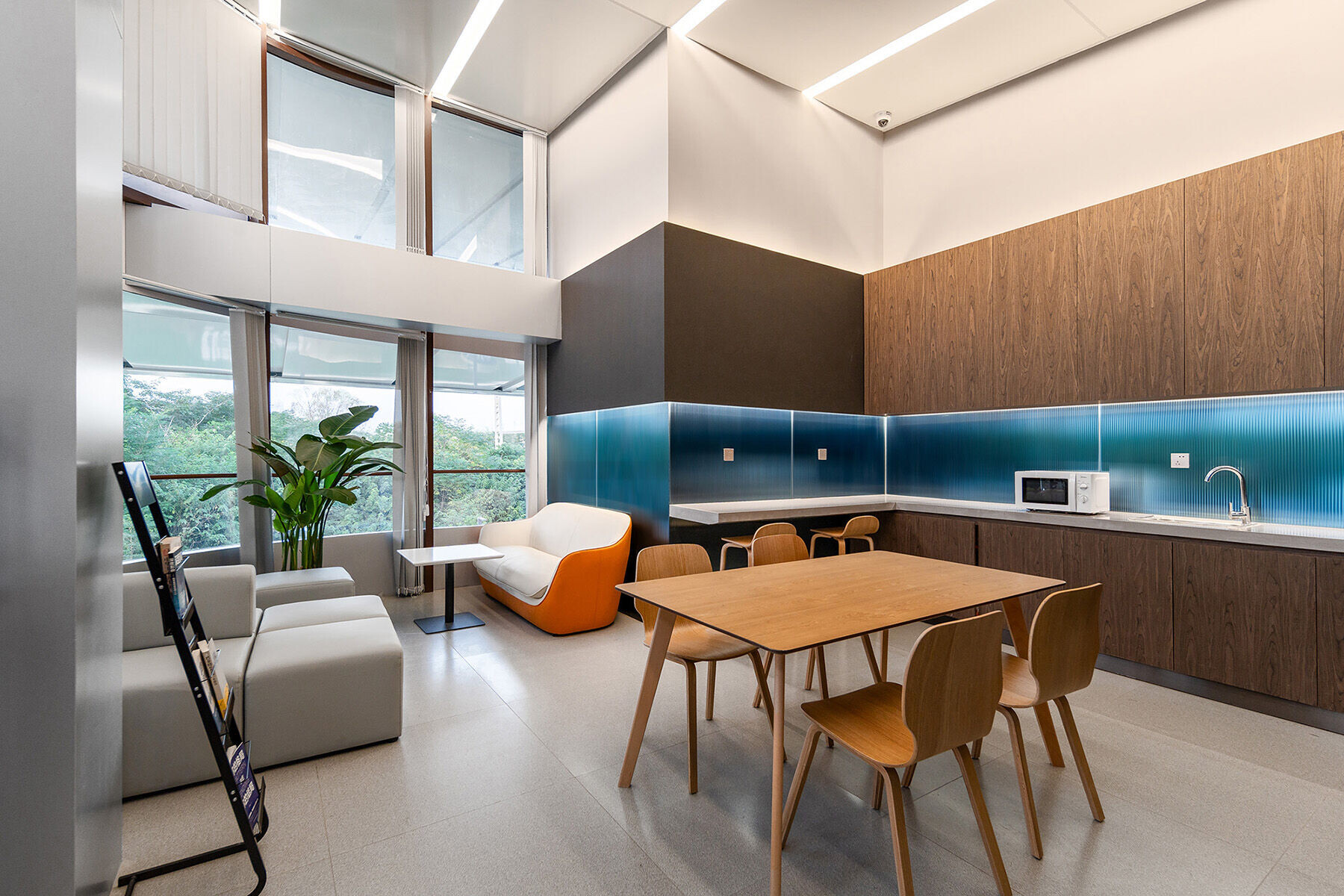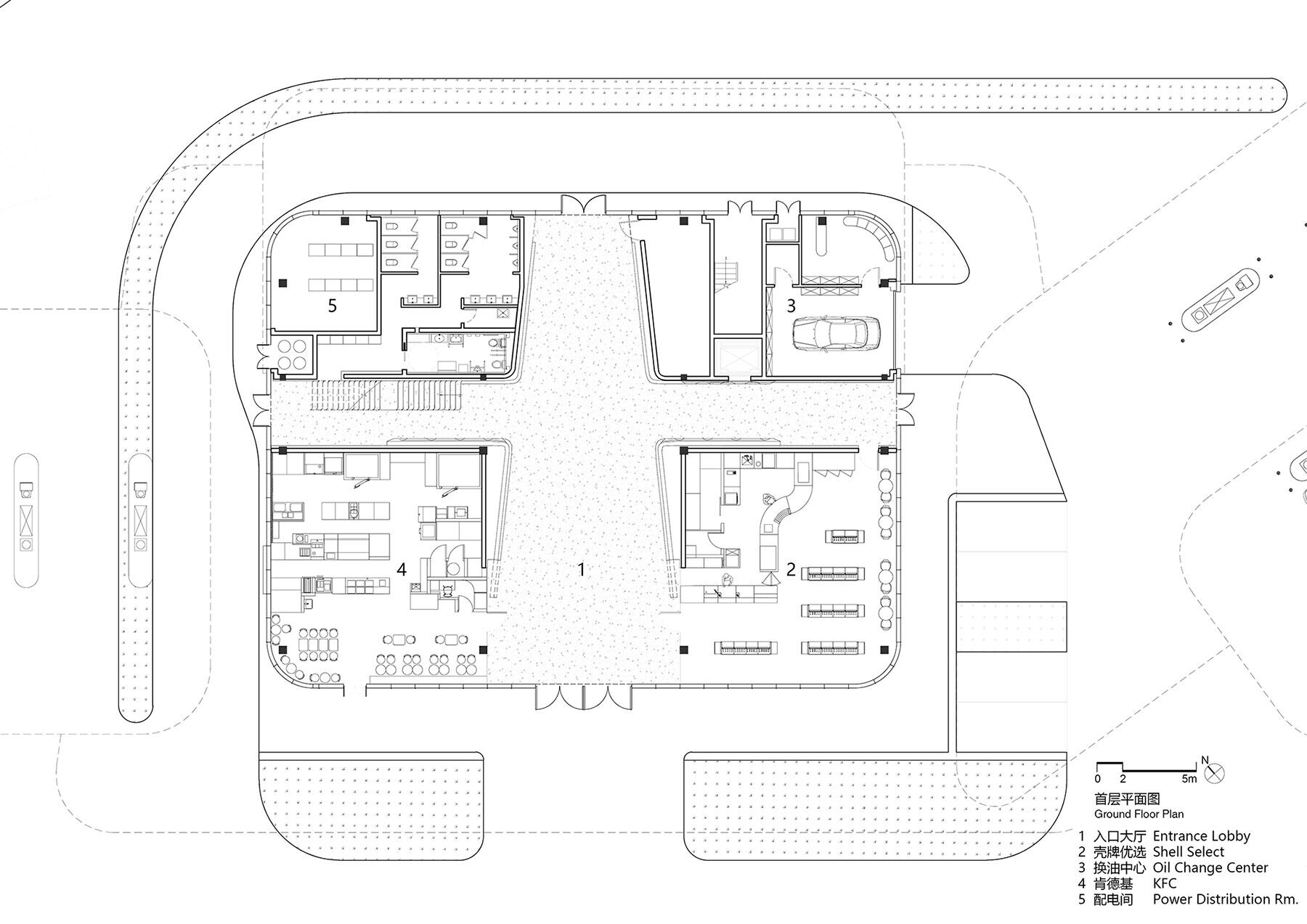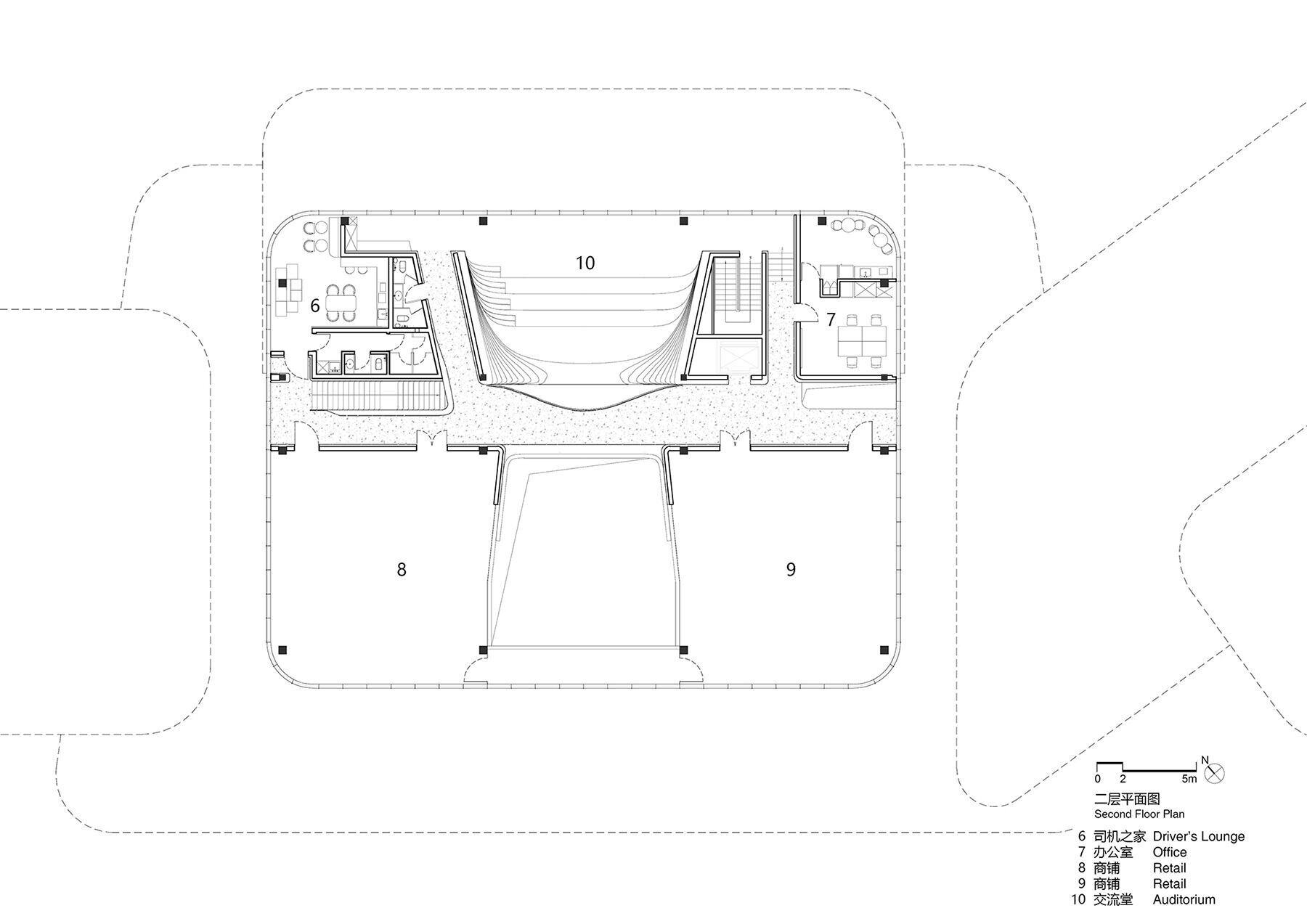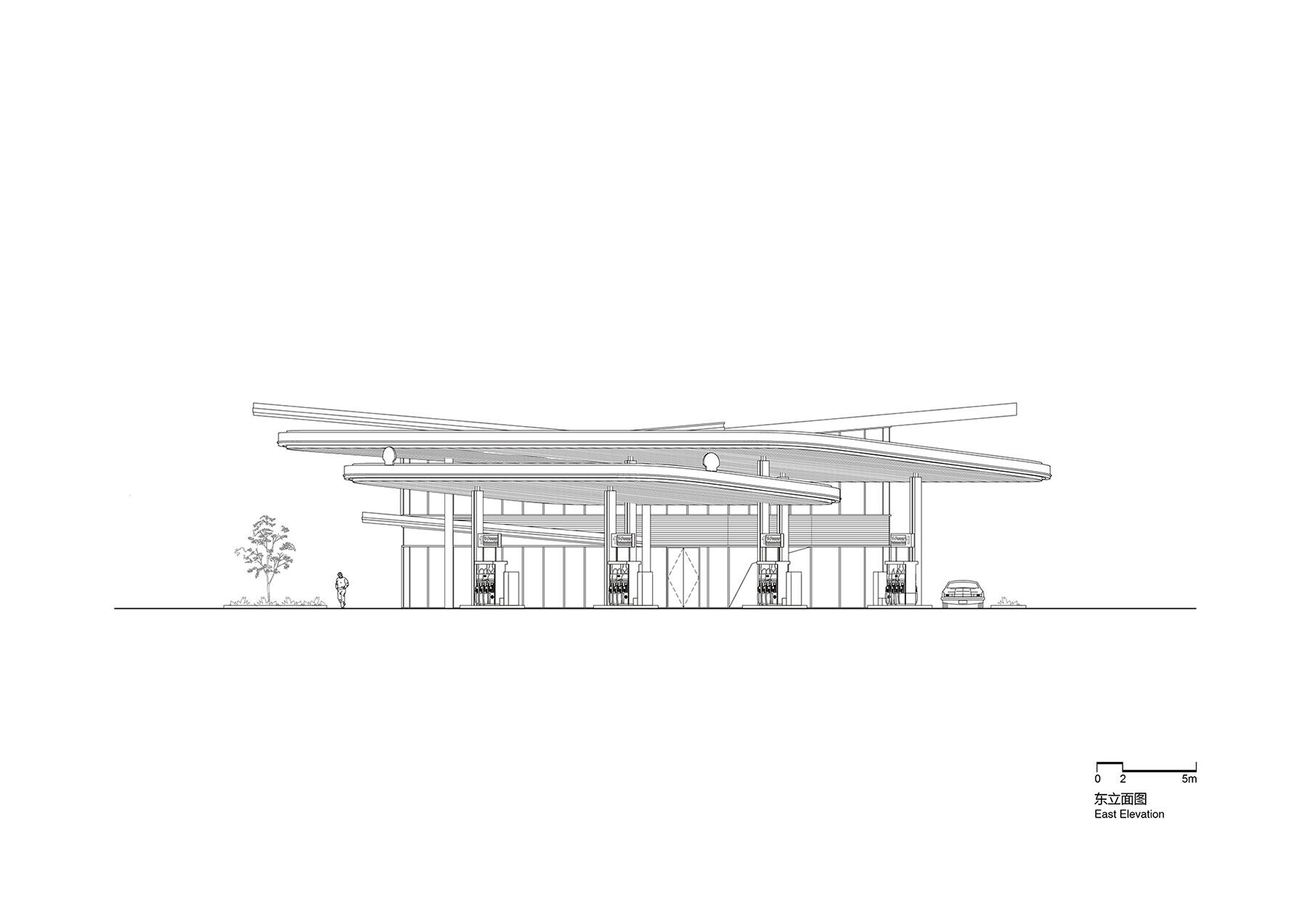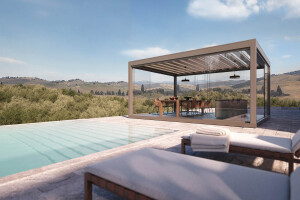ATAH’S VISIONARY DESIGN FOR SHELL’S INTEGRATED ENERGY STATION
Chinese architecture firm ATAH takes the lead in designing the world’s first ’10-in-1′ integrated energy station for global energy giant Shell. Situated in Wuhan, China, this groundbreaking project responds to the evolving landscape of the energy industry, particularly in the wake of China’s ambitious ‘dual carbon’ goal aimed at achieving carbon neutrality by 2060. The design focuses on four key objectives — diversification of energy supply, enhanced service quality, environmental protection measures, and adaptation to market changes. The site’s strategic location, surrounded by industrial plants and logistics bases, inspired a layout emphasizing efficient multi-energy aggregation. The main structure and canopy area form five interconnected islands, seamlessly covering various energy types and providing comprehensive services, including vehicle refueling, hydrogen refueling, charging, and more.
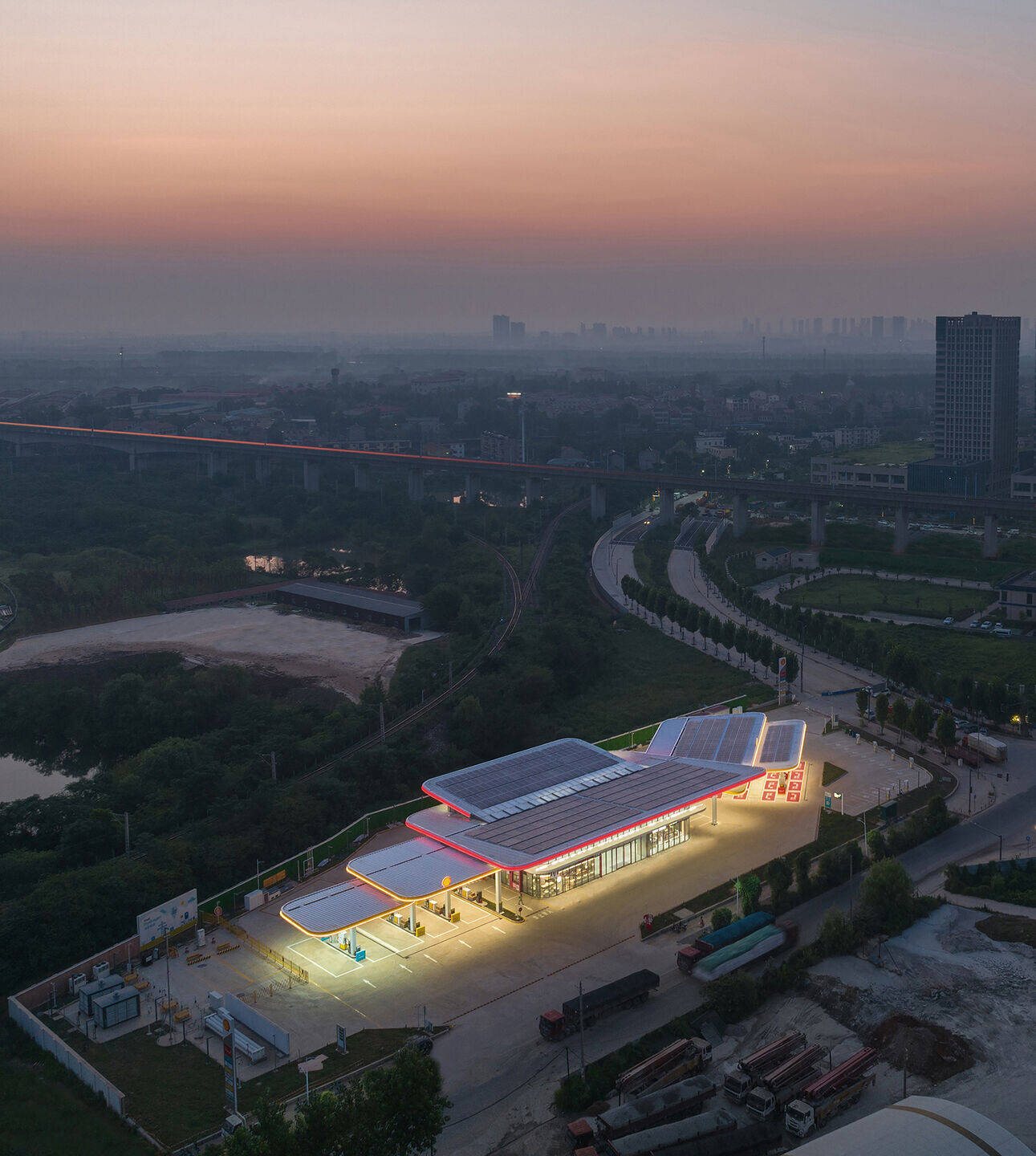
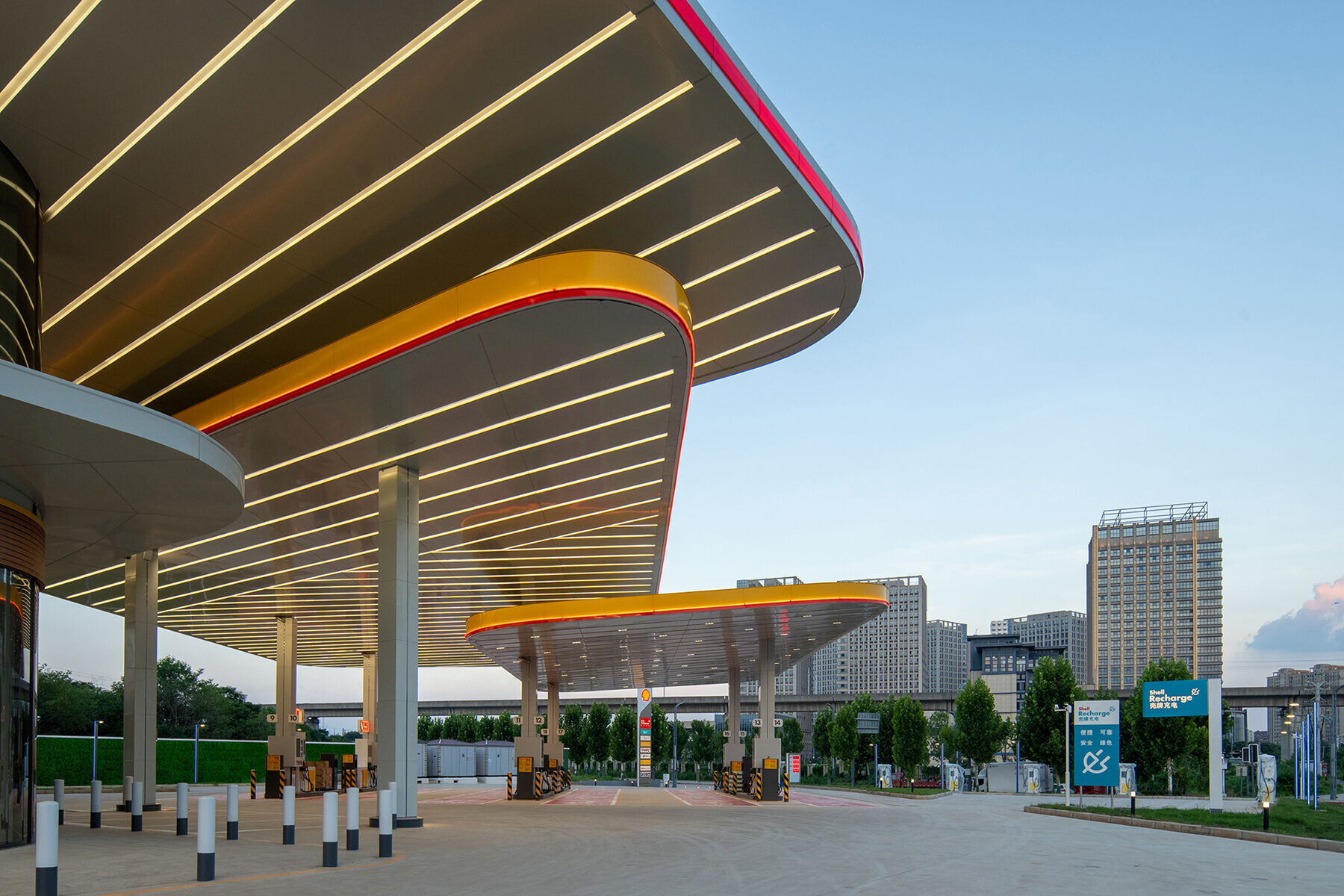
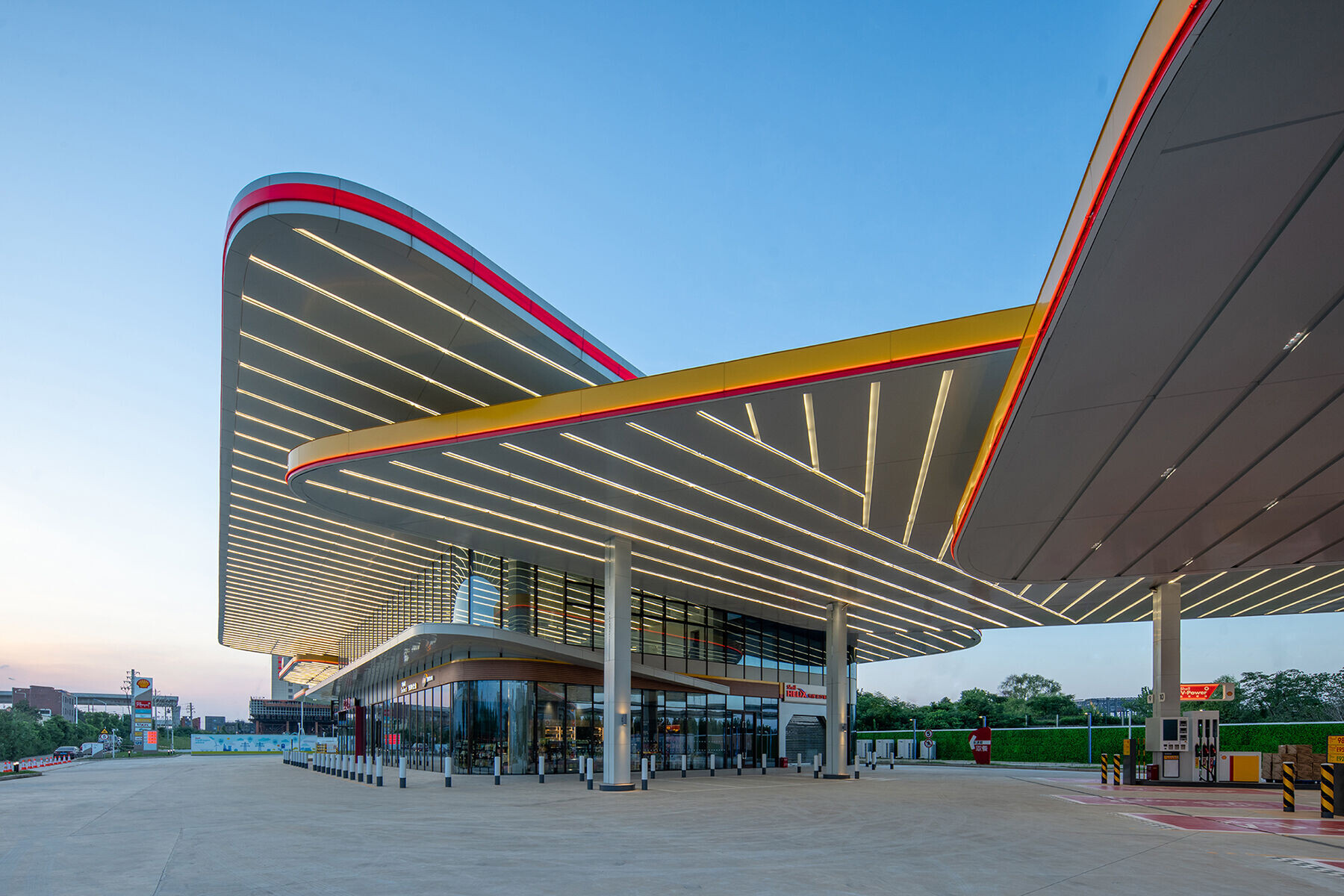
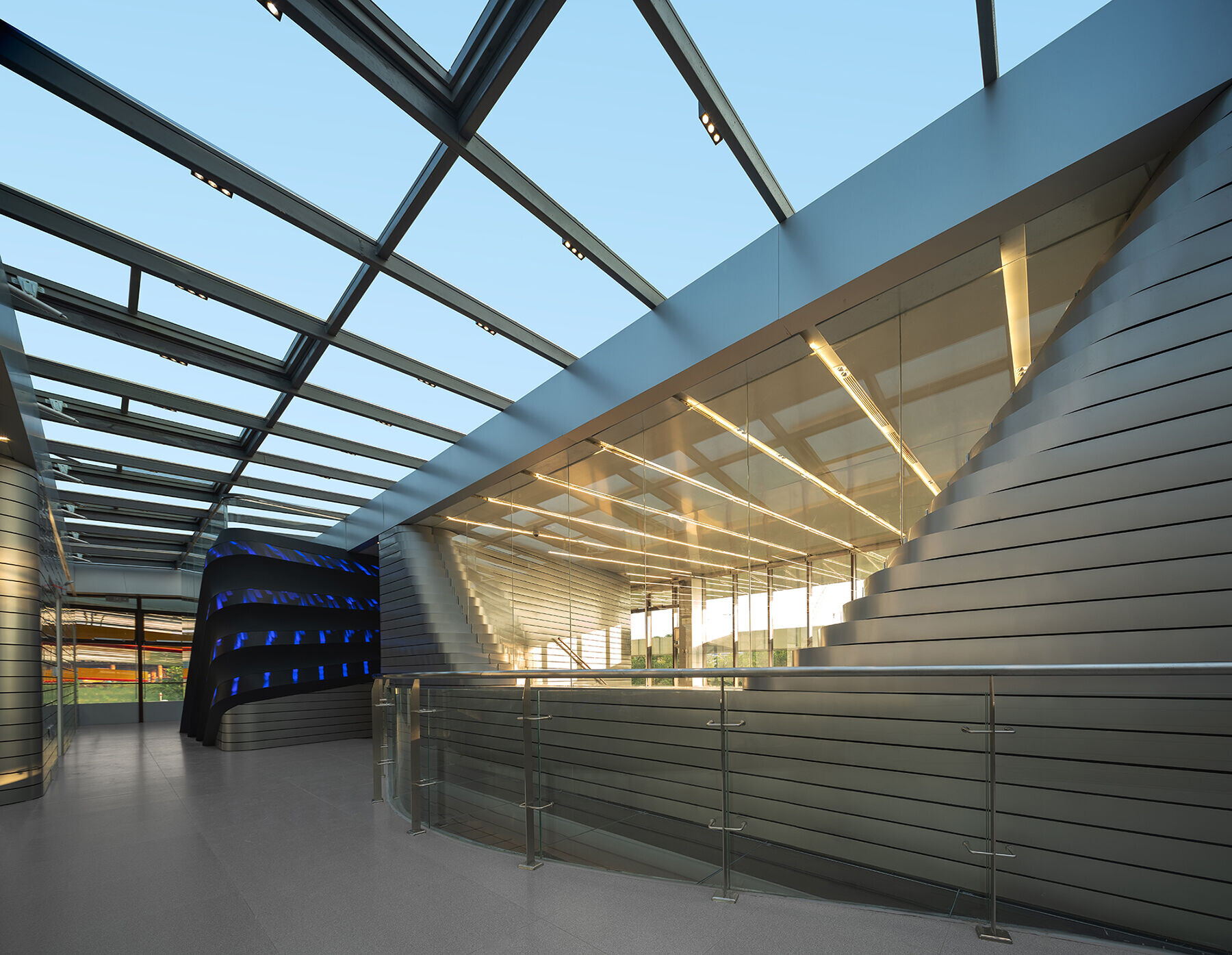
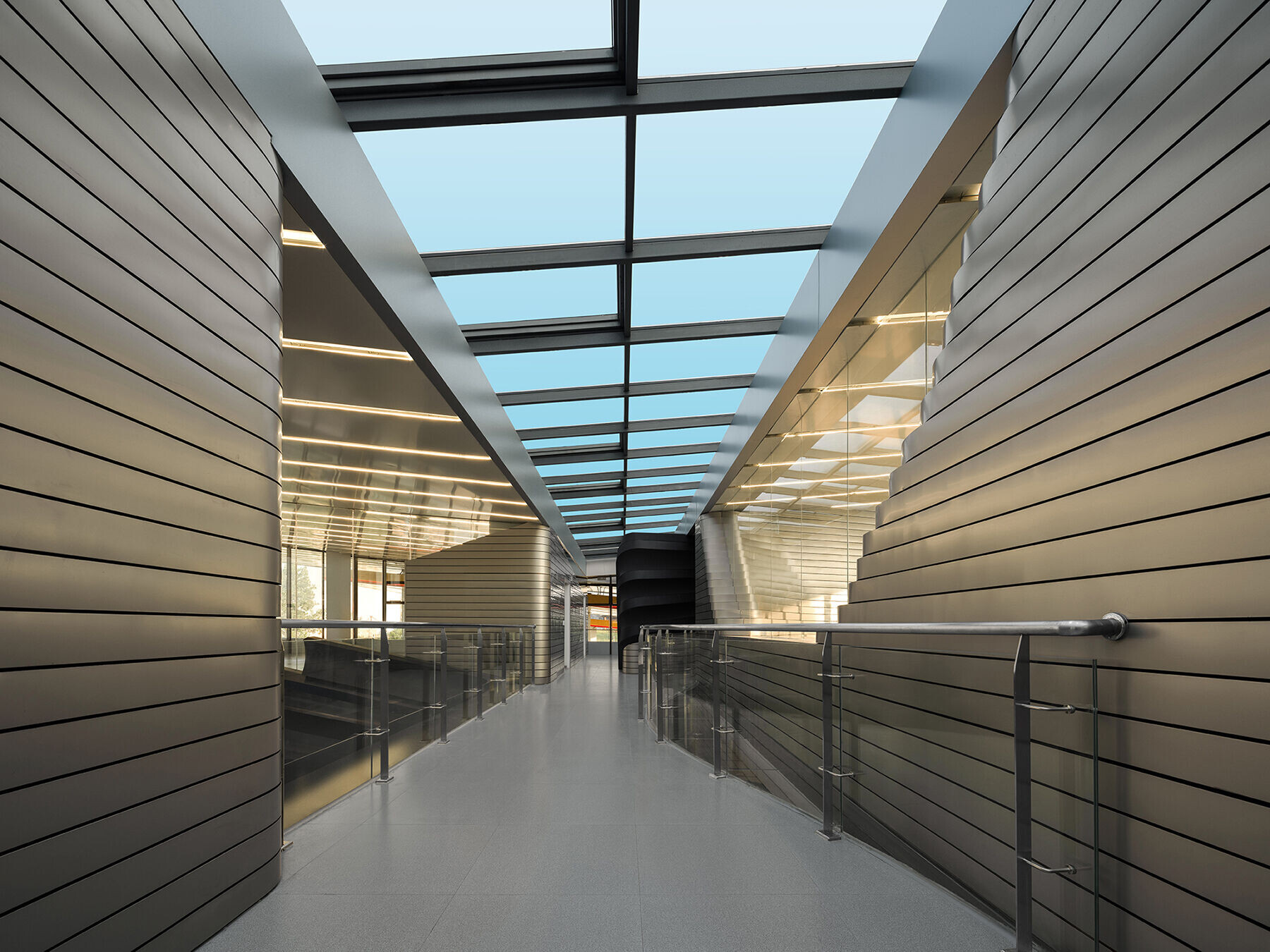
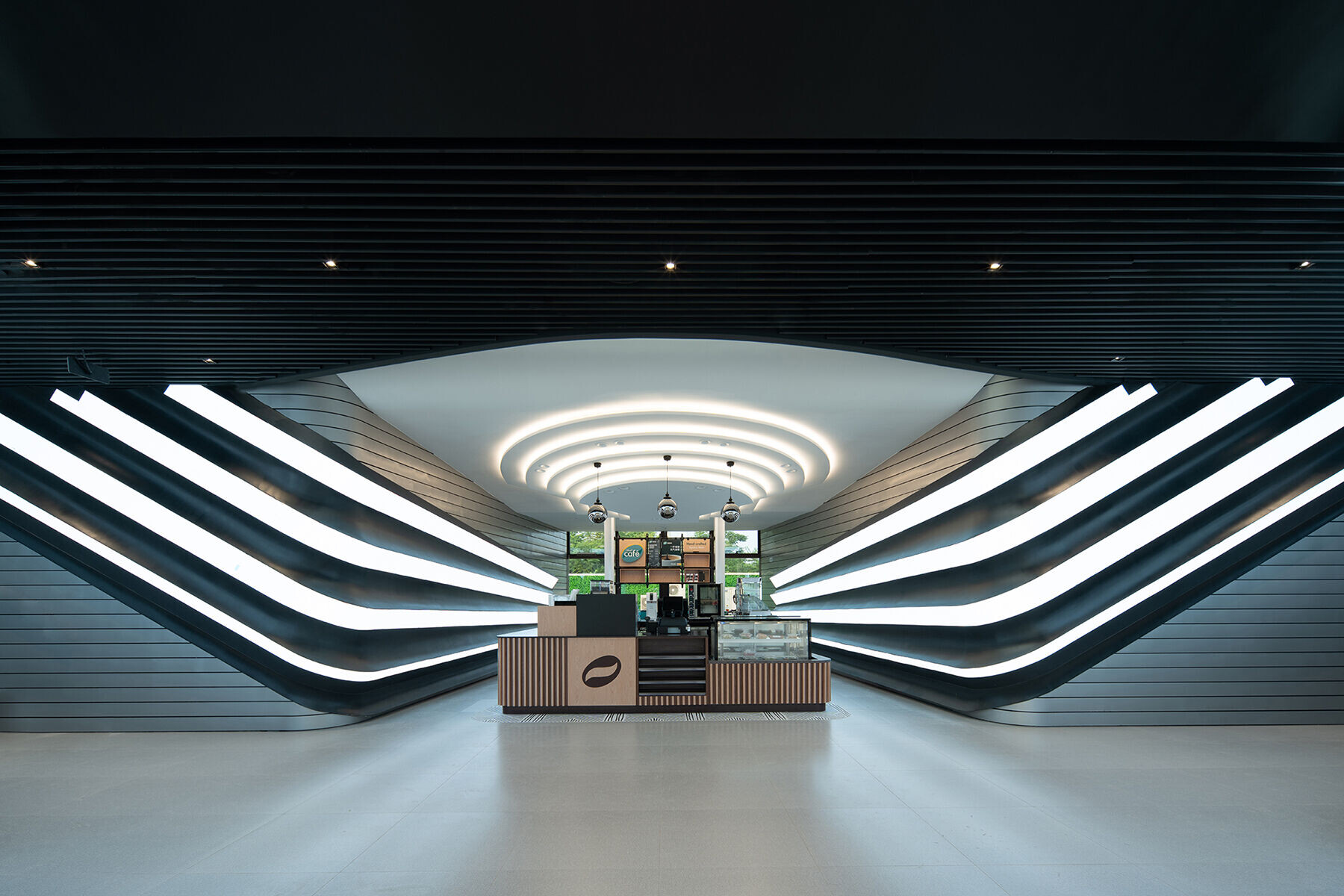
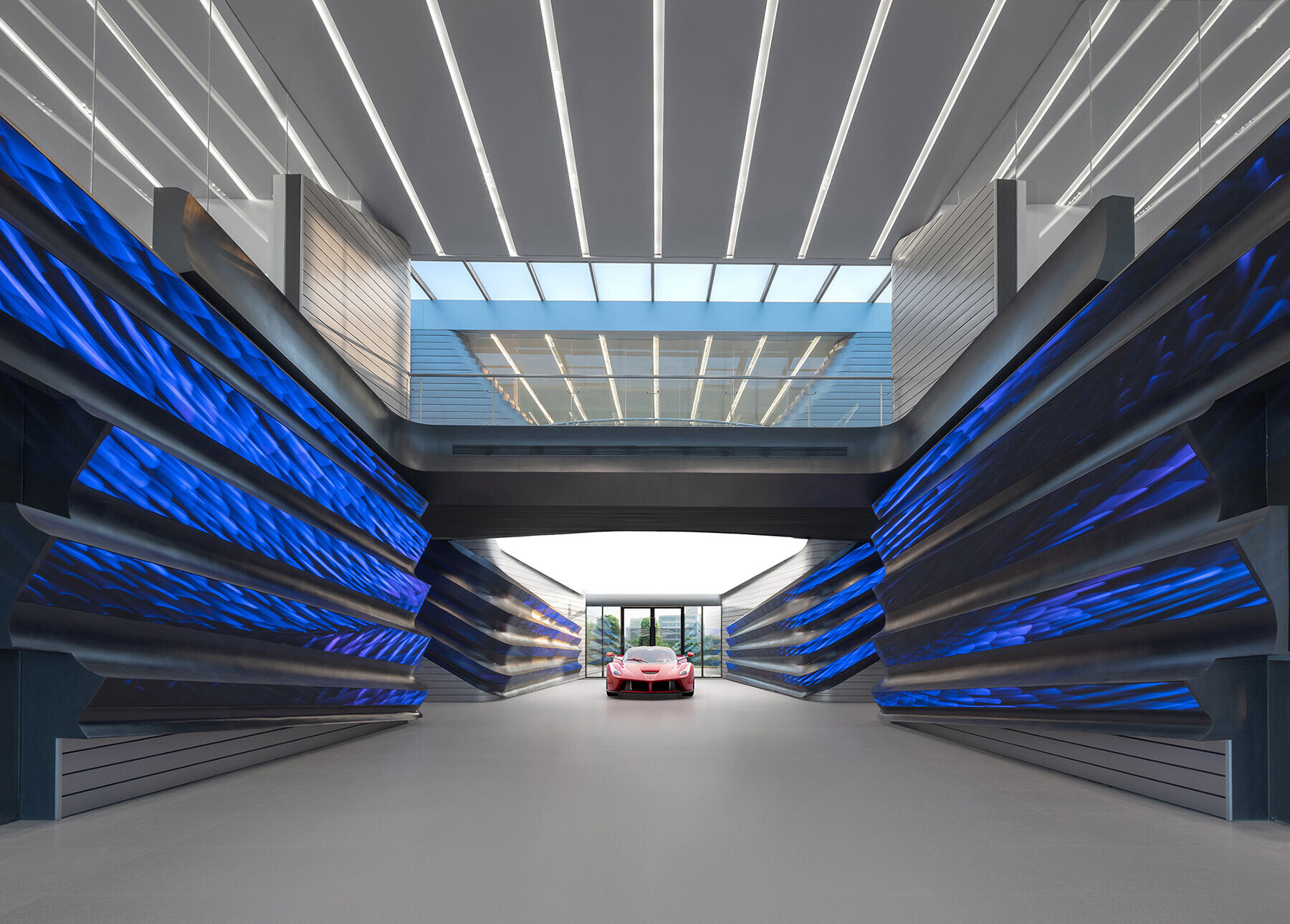
UNIQUE MULTI-LEVEL ROOF BLENDS AESTHETICS WITH FUNCTIONALITY
The design incorporates a unique multi-level roof, carefully balancing aesthetics and functionality. Strips of light integrated into the roofing attract visitors during the night, ensuring a continuous flow to the site. The roof’s design creates an industrial landscape visible from the interior communicating hall. The energy service center’s functional organization follows an inverted trapezoidal cross pattern, dividing serviced and service spaces. The integration of east-west traffic links and north-south public spaces forms a spatial framework that facilitates seamless interactions. In terms of sustainability, the design incorporates advanced energy management technology, solar panels, and a rainwater management system. The nearly 1,300 square meters of solar photovoltaic panels generate over 1,500 kilowatt-hours of electricity daily, supporting station operations and providing charging services for new energy vehicles. ATAH‘s innovative design for Shell’s Wuhan Integrated Energy Station aligns with the global push towards clean energy solutions.

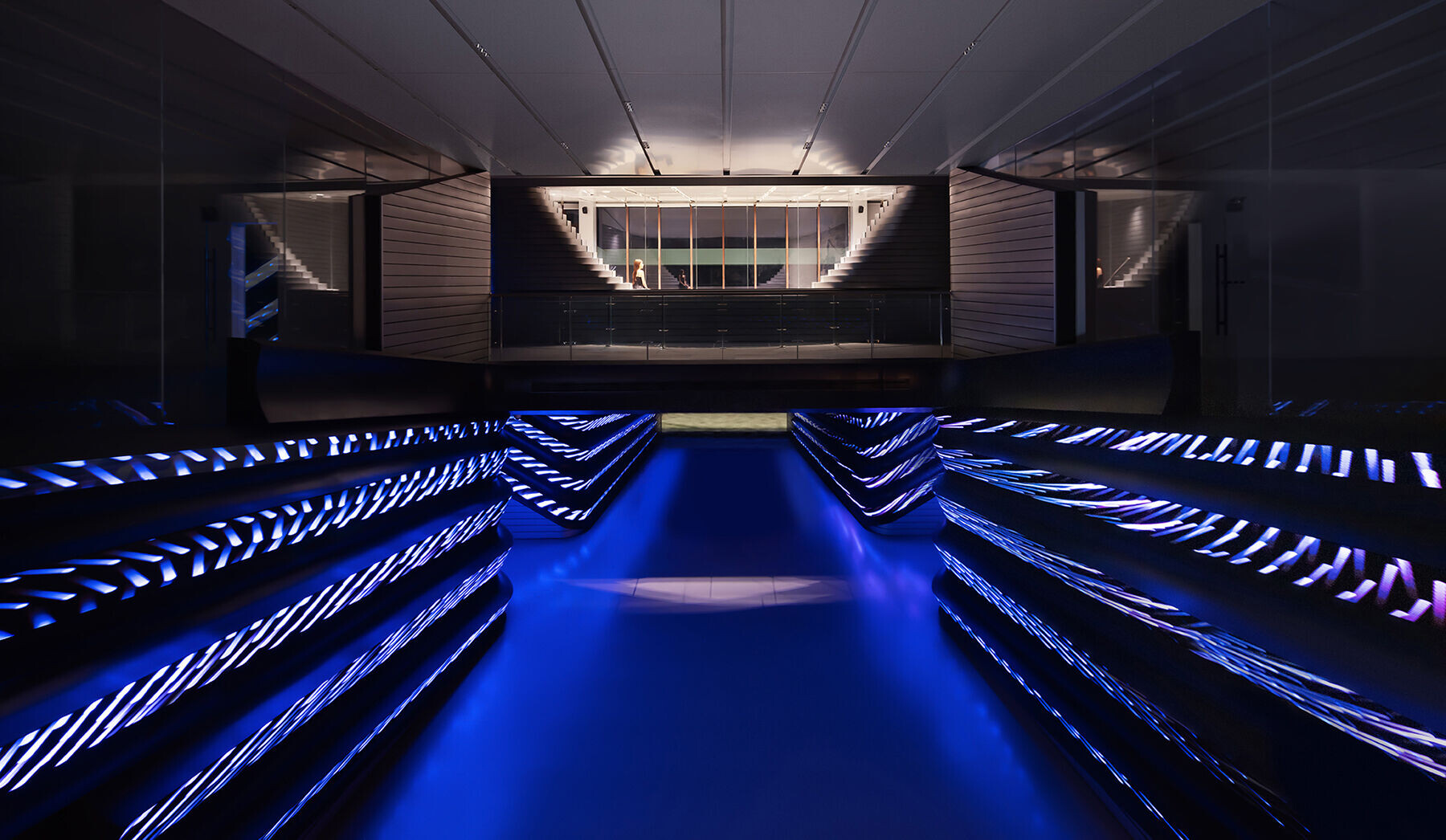
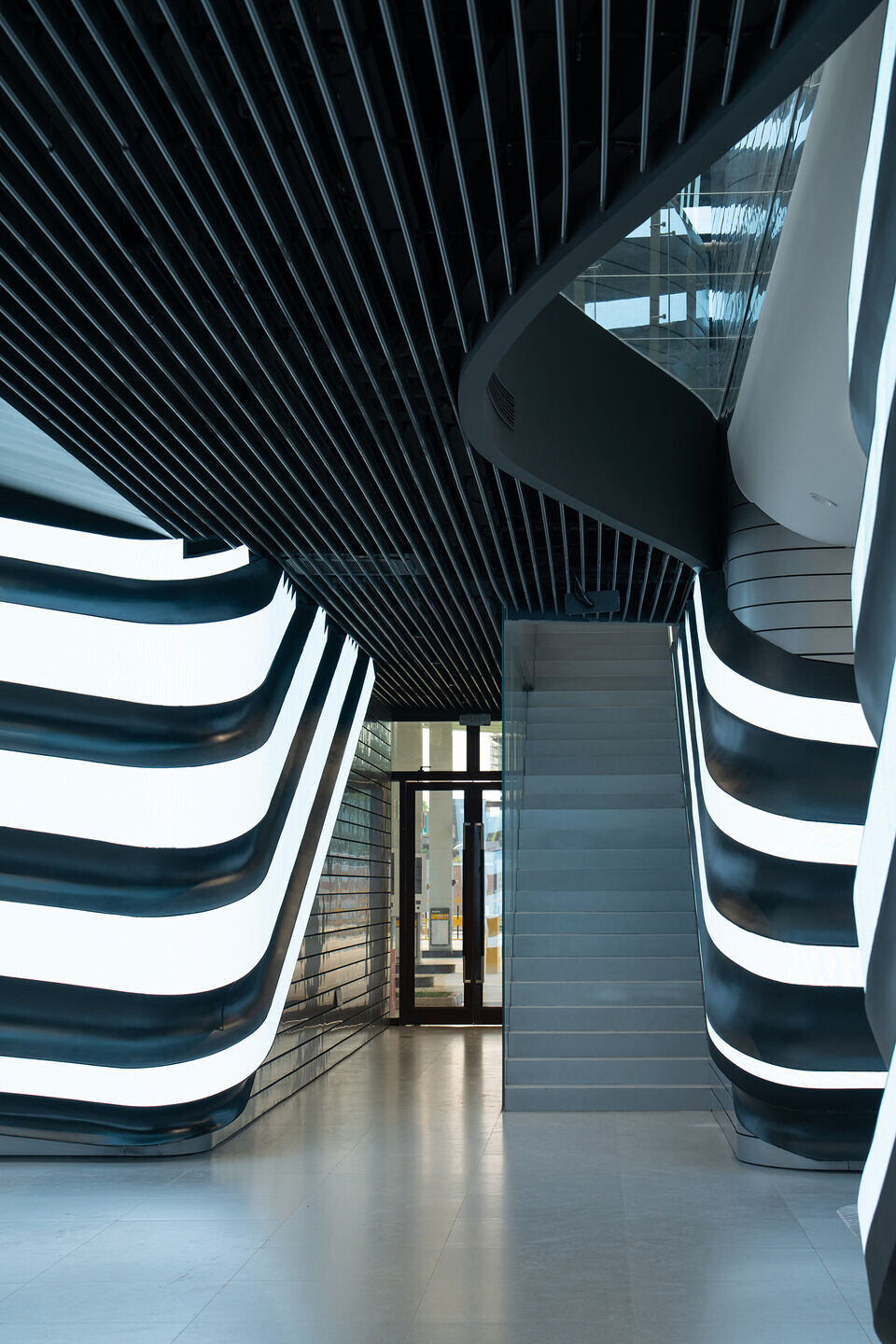
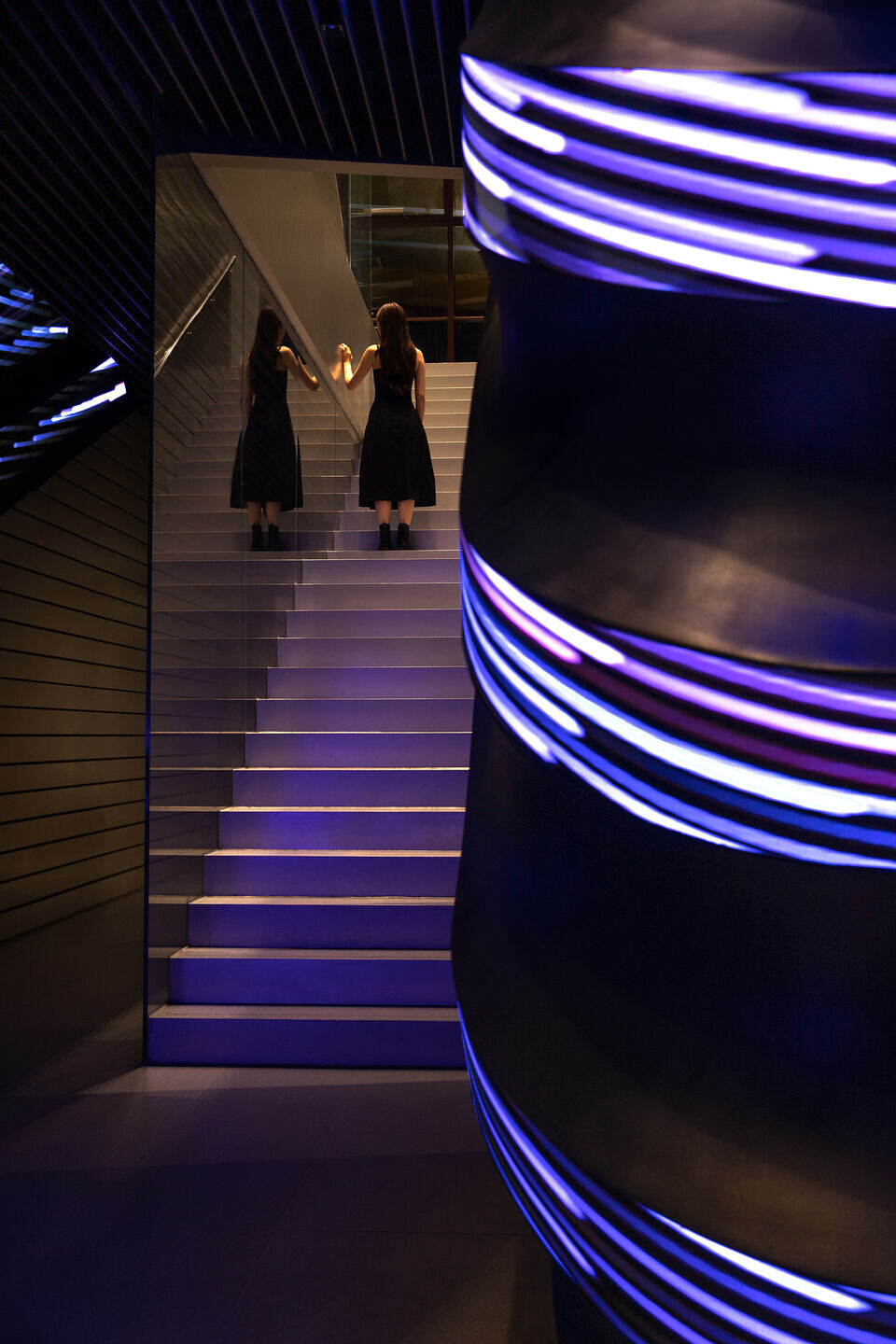
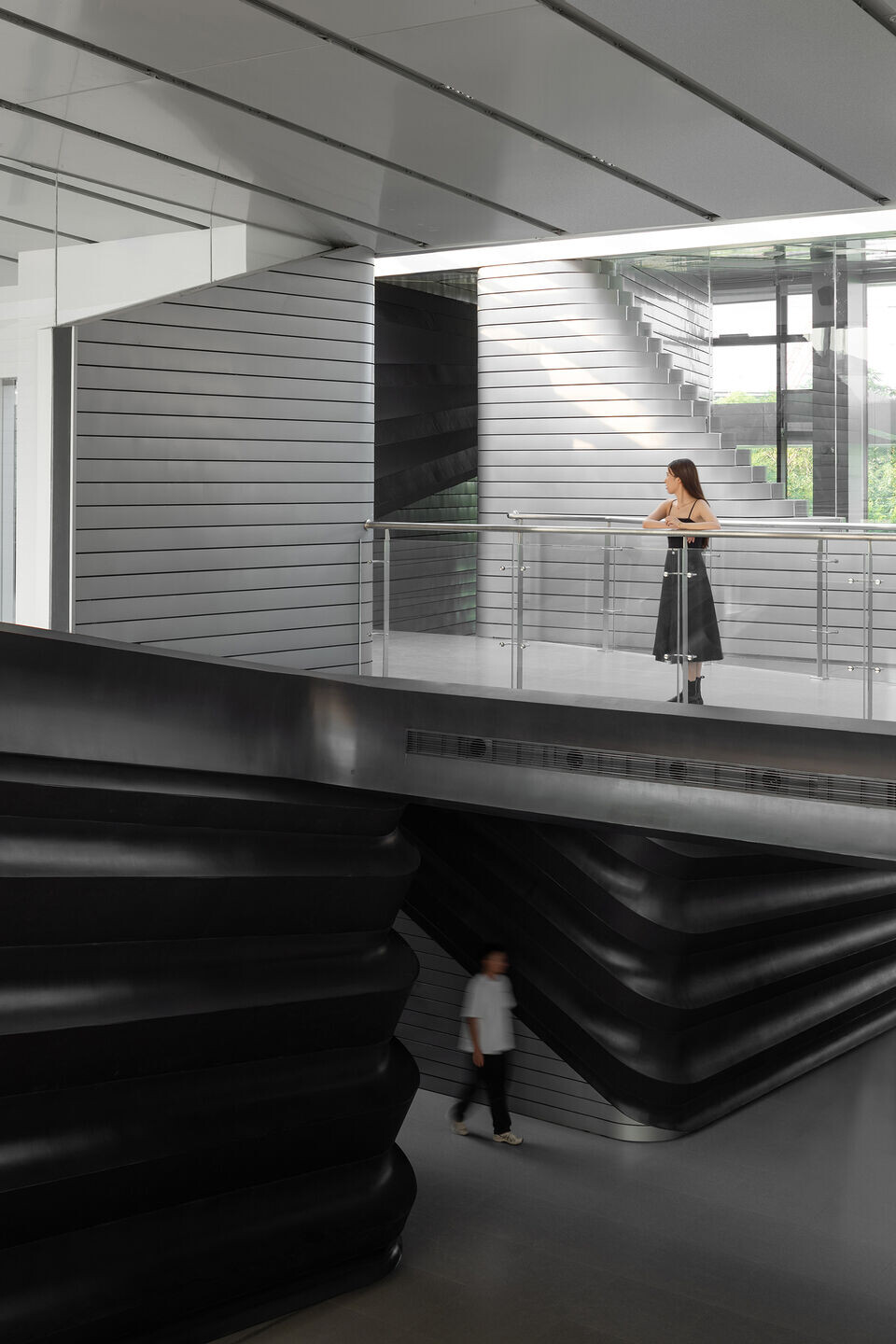
THE PRESENTATION OF DESIGN-ENABLED CORPORATE VALUES
The architects believe that the interface of urban public design places has been dissolved and transformed by the rapid development of information technology and the extensive penetration of communication media. The design offers an experiential strategy that consists of a basic framework and a fluid digital interface. It also realizes an infrastructural building that is almost completely self-sufficient in energy in most seasons. It is hoped that this practice will open up new possibilities for future energy infrastructures in clean energy service scenarios under the goal of "dual carbon".
